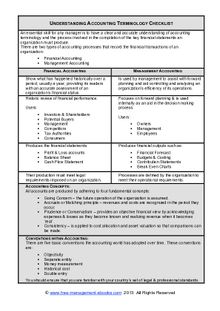PREPARING A WORKABLE BUDGET CHECKLIST
 PDF
PDF
This checklist is designed to help you create a budget quickly and efficiently that enables you to achieve your financial target. It gives a broad based six-step process you need to work through to come up with a budget figure that is acceptable to the needs of your department or team and meets the financial target you have been given.
Being able to use a spreadsheet is essential management skill that makes the task of manipulating the figures that make up your budget easy and quick. This allows you the flexibility to create several versions of how you could allocate your budget between different cost centers or budget holders. One of its most useful functions is the opportunity to assess what impact on expenditure and performance a reduction in your overall budget would have and importantly your ability to attain the set target.
Many managers are responsible for managing a variety of devolved budgets and this adds additional steps to the process above. This template can be used for devolved budget creation by altering the name of additional sheet current referred to as ‘Version 1, Version 2 & Version 3’ to ‘Budget Name Unit 1, Budget Name Unit 2 & Budget Name Unit 3’. If you require further spreadsheets it is easy to add them to this template with one click.
Being responsible for several budgets requires you to be meticulous in your budget management and different templates for creating, monitoring and forecasting will be invaluable tools. They also provide you with the ideal tool to ask your unit budget holders to use in when they are sending their forecasts and expenditure reports back to you. The diagram below shows a typical process of how an overall budget is allocated out to lower level business units and their respective budget holders.
Download "PREPARING A WORKABLE BUDGET CHECKLIST.pdf"



 PDF
PDF
 PDF
PDF
 PDF
PDF
 PDF
PDF
 PDF
PDF
 PDF
PDF